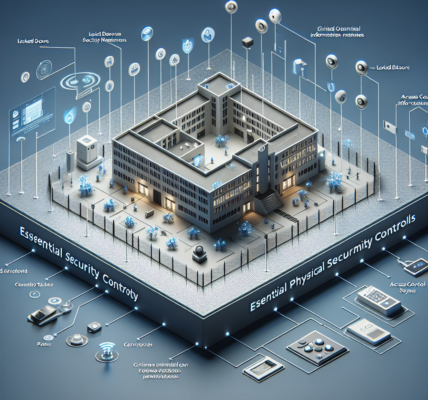In today’s digital landscape, organizations face an ever-growing threat from cyberattacks, particularly when handling sensitive data governed by the Criminal Justice Information Services (CJIS) Security Policy. Without effective CJIS Ready incident response planning, agencies risk severe repercussions, including data breaches, legal ramifications, and a loss of public trust. The stakes have never been higher. To safeguard your organization and ensure compliance with CJIS mandates, it is essential to develop a robust incident response plan that addresses the unique challenges posed by cyber threats. This article will guide you through the essential elements of CJIS-compliant incident response plans and provide strategies to enhance your organization’s readiness against potential incidents.
Essential Elements of CJIS-Compliant Incident Response Plans
The cornerstone of any CJIS-compliant incident response plan is a thorough understanding of the CJIS Security Policy itself. This comprehensive document outlines the requirements for safeguarding criminal justice information, mandating specific controls, and establishing protocols for incident reporting and response. An effective response plan should begin with a detailed risk assessment, identifying potential vulnerabilities and the specific types of data that need protection. This process not only aligns your organization with CJIS regulations but also enables a proactive approach to cybersecurity.
A crucial component of your incident response plan is the establishment of an incident response team (IRT). This team should include personnel with varied expertise, such as IT security, legal counsel, and communication specialists. By defining roles and responsibilities, the IRT can operate efficiently when a security incident occurs. Additionally, regular training and simulations should be conducted to prepare team members for real-world scenarios. This continuous engagement ensures that everyone is familiar with their duties and can act decisively to minimize damage.
Lastly, a robust communication strategy is vital for a CJIS-compliant incident response plan. Developing clear channels for internal and external communication can mitigate confusion during a crisis. Your plan should specify how to notify stakeholders, including law enforcement agencies and affected individuals, while adhering to legal guidelines. Furthermore, an effective post-incident review process allows for the identification of lessons learned, ensuring that your organization continuously improves its incident response capabilities.
Strategies for Enhancing Cybersecurity Incident Readiness
To bolster your organization’s readiness for cybersecurity incidents, investing in advanced monitoring tools is essential. These tools provide real-time visibility into network activity and help detect anomalies that may indicate a breach. Enhanced threat intelligence capabilities can also inform your team about emerging threats and attack vectors. By harnessing these technologies, organizations can respond swiftly and effectively to potential incidents, reducing their overall impact on operations.
Moreover, fostering a culture of cybersecurity awareness is crucial for enhancing incident response readiness. This involves training all employees, not just the IT staff, on recognizing and reporting suspicious activities. Regular workshops and exercises can instill a sense of vigilance and responsibility throughout the organization. Providing employees with the knowledge to identify phishing attempts or unusual behavior can make a substantial difference in early detection and response to incidents.
In addition to technological and cultural investments, conducting regular drills and tabletop exercises can significantly improve your incident response capabilities. These simulated scenarios allow your IRT to practice their response protocols in a controlled environment. Evaluating their performance during these drills provides valuable insights into areas needing improvement and helps ensure that the team can execute the response plan effectively when a real incident occurs. Such exercises not only refine skills but also enhance team cohesion and communication under pressure.
In conclusion, developing a CJIS Ready incident response plan is not just a regulatory requirement but a critical necessity for protecting sensitive data against the increasing tide of cyber threats. By incorporating essential elements such as a comprehensive understanding of the CJIS Security Policy, establishing a dedicated incident response team, and implementing a solid communication strategy, your organization can position itself to respond effectively to incidents. Furthermore, adopting advanced monitoring tools, fostering a culture of awareness, and conducting regular training exercises will enhance your overall incident readiness. As cyber threats continue to evolve, staying ahead of the curve is imperative. By taking these proactive measures, you can safeguard your organization’s integrity and uphold the trust placed in you by the communities you serve. Don’t wait for an incident to strike; act now to fortify your defenses and ensure compliance with CJIS standards.




